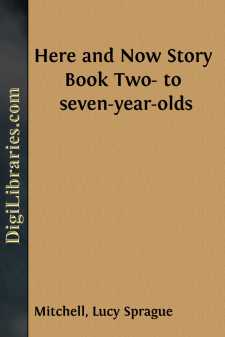Categories
- Antiques & Collectibles 13
- Architecture 36
- Art 48
- Bibles 22
- Biography & Autobiography 813
- Body, Mind & Spirit 142
- Business & Economics 28
- Children's Books 15
- Children's Fiction 12
- Computers 4
- Cooking 94
- Crafts & Hobbies 4
- Drama 346
- Education 46
- Family & Relationships 57
- Fiction 11828
- Games 19
- Gardening 17
- Health & Fitness 34
- History 1377
- House & Home 1
- Humor 147
- Juvenile Fiction 1873
- Juvenile Nonfiction 202
- Language Arts & Disciplines 88
- Law 16
- Literary Collections 686
- Literary Criticism 179
- Mathematics 13
- Medical 41
- Music 40
- Nature 179
- Non-Classifiable 1768
- Performing Arts 7
- Periodicals 1453
- Philosophy 64
- Photography 2
- Poetry 896
- Political Science 203
- Psychology 42
- Reference 154
- Religion 513
- Science 126
- Self-Help 84
- Social Science 81
- Sports & Recreation 34
- Study Aids 3
- Technology & Engineering 59
- Transportation 23
- Travel 463
- True Crime 29
Here and Now Story Book Two- to seven-year-olds
Categories:
Description:
Excerpt
Our school has always assumed that children are interested in and will work with or give expression to those things which are familiar to them. This is not new: the kindergarten gives domestic life a prominent place with little children. But with the kindergarten the present and familiar is abandoned in most schools and emphasis is placed upon that which is unfamiliar and remote. It is impossible to conceive of children working their own way from the familiar to the unknown unless they develop a method in understanding the familiar which will apply to the unfamiliar as well. This method is the method of art and science—the method of experimentation and inquiry. We can almost say that children are born with it, so soon do they begin to show signs of applying it. As they have been in the past and as they are in the present to a very great extent, schools make no attempt to provide for this method; in fact they take pains to introduce another. They are disposed to set up a rigid program which answers inquiries before they are made and supplies needs before they have been felt.
We try to keep the children upon present day and familiar things until they show by their attack on materials and especially upon information that they are ready to work out into the unknown and unfamiliar. In the matter of stories and verse which fit into such a program we have always felt an almost total void. Whether other schools feel this would depend upon their intentional program. Surely no school would advise giving classical literature without the setting which would make the stories and verse understandable. It is a question whether the fact of desirable literature has not in the past and does not still govern our whole school program more than many educators would be willing to admit. What seems to be more logical is to set up that which is psychologically sound so far as we know it and create if need be a new literature to help support the structure.
In the presence of art, schools have always taken a modest attitude. For some reason or other they seem to think it out of their province. They regard children as potential scientists, professional men and women, captains of industry, but scarcely potential artists. To what school of design, what academy of music, what school of literary production, do our common schools lead? We are not fitting our children to compose, to create, but at our best to appreciate and reproduce.
Mrs. Mitchell as story teller in this new sense of writing stories, rather than merely telling them, is having an influence in the school which has not been altogether unlooked for. The children look upon themselves as composers in language and language thus becomes not merely a useful medium of expression but also an art medium. They regard their own content, gathered by themselves in a perfectly familiar setting as fit for use as art material. That is, just as the children draw and show power to compose with crayons and paints, they use language to compose what they term stories or occasionally, verse. Often these “stories” are a mere rehearsal of experiences, but in so far as they are vivid and have some sort of fitting ending they pass as a childish art expression just as their compositions in drawing do.
So far as content is concerned the school gives the children varied opportunities to know and express what they find in their environment. Mrs. Mitchell finds this content in the school. It is being used, it is even being expressed in language. What she particularly does is to show the possibility of using this same content as art in language. She does this both by writing stories herself and by helping the children to write. The children are not by any means read to, so much as they are encouraged to tell their own stories. These are taken down verbatim by the teachers of the younger groups. Through skilful handling of several of the older groups what the children call “group stories” are produced as well as individual ones.
We hope this book will bring to parents and teachers what it has to us, a new method of approach to literature for little children, and to children the joy our children have in the stories themselves....


